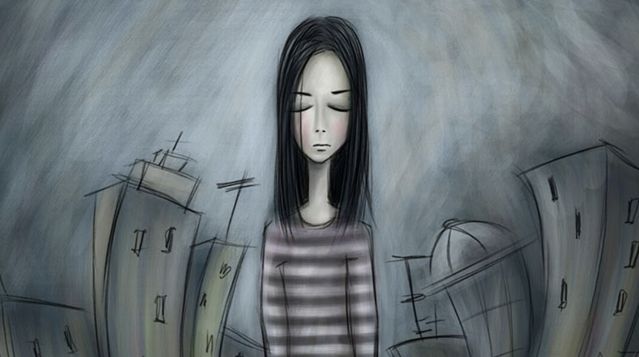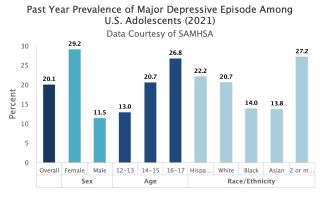SUICIDE- Adolescent Depression and Suicidal Behavior. Understanding the risk factors and implications. Reviewed by Michelle Quirk

KEY POINTS-
- School-related stress plays a pivotal role in the mental well-being of teens.
- Insufficient sleep and screen time have been recognized as significant health risks.
- Gender, sexual orientation, ethnicity, and environmental factors impact mental health differently.
Adolescent depression is a significant mental health issue that affects a considerable number of teenagers worldwide. Despite its prevalence, depression in teens is often misunderstood or overlooked, leading to potential consequences like suicidal thoughts and behaviors. In recent years, the prevalence of adolescent depression has been on the rise, affecting about 10 percent of all teens and a staggering 30 percent of high-school students. Shockingly, about 20 percent of these adolescents have contemplated suicide and 9 percent have tried to take their lives according to the National Alliance on Mental Illness. This highlights the urgent need to address this concerning issue. Suicide is the second-leading cause of death among people aged 15 to 24 in the United States.

Traditionally considered an adult disorder, depression is now recognized as a significant concern for teenagers as well, with rates escalating during early adolescence, especially among girls.
Depression and suicidal ideation are influenced by a complex interplay of various factors. Extensive research across diverse fields has shed light on these factors and provided insights into why some teenagers are at higher risk than others. While the precise mechanisms linking these factors to mental health outcomes are still under study, being aware of these factors is crucial in recognizing symptoms and changes in behavior, enabling the early detection of mental health issues in teens.

School-Related Factors and Pressure to Achieve
School-related stress plays a pivotal role in the mental well-being of teenagers. Excessive homework has been identified as a primary source of stress and anxiety among students, impacting their psychological health, physical well-being, and sleep patterns. Furthermore, the pressure to achieve specific academic goals can lead to depression, as evidenced by tragic cases of youth suicide in certain communities. Striking a balance between academic excellence and mental health is crucial in supporting the overall well-being of adolescents.

Sleep Disorders and Screen Time
Insufficient sleep has been recognized as a significant health risk among adolescents, with potential consequences including depression, suicidal ideation, obesity, and academic underperformance. Teenagers who sleep less than eight hours per night are at a threefold increased risk of suicide attempts. Additionally, excessive screen time, particularly on social media platforms, has been associated with higher rates of depression and suicide-related outcomes among teenagers.
Gender, Sexual Orientation, and Ethnicity
Gender differences are evident in adolescent suicide rates, with males more likely to complete suicide, while females have higher rates of suicide attempts. These differences can be attributed to variations in suicide methods and the socialization of suicidal intentions. High-school students identifying as lesbian, gay, or bisexual attempt suicide at a rate five times higher than heterosexual students. Ethnicity plays also a significant role in the suicide rates among teenagers. While African American adolescents have higher gender ratios of suicide completions, Native American adolescents have the highest suicide rates among all ethnic groups.

Socioeconomic Characteristics and Environmental Actors
Lower socioeconomic status has a profound impact on mental health, including depression, obesity, and diabetes. The family environment is one of the most influential factors in shaping the psychological well-being of adolescents, with elements like familial involvement, open communication, and loving atmosphere contributing positively to their subjective well-being.
Conversely, factors like parental divorce and childhood abuse experiences can increase the risk of depression later in life. Furthermore, the presence of guns in households has been linked to higher youth suicide rates, as they increase the success rate of adolescent suicide attempts. Last, religiosity appears to have a protective effect on teenage risk behaviors, with increased religious participation associated with reduced depressive symptoms. Suicide rates are higher in rural areas due to social isolation, prevalence of firearms, economic hardship, and limited access to mental health services.
The Underlying Brain and Cognitive Developments
Depression's neural basis is complex and not yet fully understood. Neuroimaging studies have identified abnormalities in various brain regions and circuits associated with depression. The involvement of threat-processing and reward-processing circuits, which continue to mature and show sex differences during adolescence, may explain the gender paradox in suicidal behavior.
Adolescent depression is a pressing mental health concern with serious implications, including suicidal behavior. By understanding the various risk factors contributing to teen depression, including school-related stress, sleep disorders, screen time, socioeconomic characteristics, family environment, religion, gender, ethnicity, guns, and underlying brain and cognitive developments, we can better address and combat this troubling issue. Efforts to raise awareness, provide mental health support, and implement preventive measures are crucial in safeguarding the well-being of our youth and reducing the alarming rates of adolescent depression and suicide.
If you or someone you love is contemplating suicide, seek help immediately. For help 24/7, dial 988 for the 988 Suicide & Crisis Lifeline, or reach out to the Crisis Text Line by texting TALK to 741741.
- Questions and Answers
- Opinion
- Story/Motivational/Inspiring
- Technology
- Art
- Causes
- Crafts
- Dance
- Drinks
- Film/Movie
- Fitness
- Food
- Jocuri
- Gardening
- Health
- Home
- Literature
- Music
- Networking
- Alte
- Party
- Religion
- Shopping
- Sports
- Theater
- Wellness
- News
- Culture
- War machines and policy

